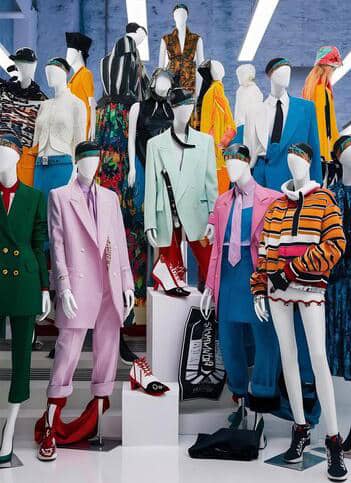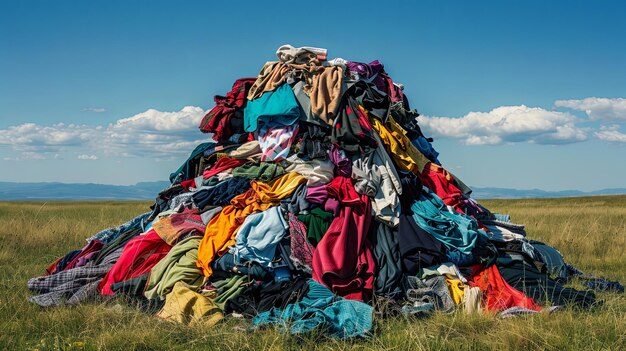The fashion industry is notorious for its environmental impact. It contributes to approximately 10% of global carbon emissions and nearly 20% of wastewater. The Geneva Environmental Network says this is because fast fashion comes at an astonishing environmental and social cost. Fast fashion impacts include pollution, water use, carbon emissions, human rights, and gender inequality. As awareness of these ecological footprints grows, consumers and businesses are seeking sustainable alternatives to the traditional model of buying and discarding clothing. Fashion rentals and subscription services have emerged as innovative solutions to combat this wastefulness. The service further promotes a circular economy that benefits both the planet and consumers.
The Rise of Fashion Rentals and Subscriptions
Fashion rentals and subscription services have gained popularity as they offer a fresh approach to fashion consumption. The global online clothing rental market was worth about $1.12 billion in 2021. This figure is expected to grow to $2.33 billion by 2030, says Grand View Research.

Rather than purchasing a new garment for every occasion, customers can rent clothing for a specific period and return it once it is no longer needed. This model is particularly appealing for high-end fashion items or special events where the clothing might only be worn once or twice. Companies like Rent a Dress, Rent the Runway, HURR Collective, and Armoire have pioneered this approach, providing access to designer brands at a fraction of the cost of ownership.
Subscription services take this concept a step further by offering curated boxes of clothing that can be worn and exchanged on a regular basis. Brands such as Nuuly and Stitch Fix allow customers to refresh their wardrobes monthly. All without the commitment of purchasing new items. This reduces the demand for fast fashion and its associated waste, as fewer garments are produced, bought, and discarded.
Reducing Fashion Waste
The environmental benefits of fashion rentals and subscriptions are significant. By extending the lifecycle of clothing items, these services reduce the demand for new production. This practice decreases the use of natural resources such as water, cotton, and synthetic fibres. Moreover, the shared economy model ensures that fewer garments end up in landfills – over 57% according to a report by Business Waste Management. The Environmental Protection Agency (EPA) reports that around 85% of textiles discarded in the United States are dumped rather than recycled, contributing to land pollution and greenhouse gas emissions as these materials decompose.

Fashion rentals and subscription services also encourage consumers to adopt more sustainable habits. By providing an alternative to the buy-wear-discard cycle, these services promote a mindset of mindful consumption. Customers are more likely to consider the longevity and versatility of a garment when renting or subscribing, rather than succumbing to impulsive purchases that are typical of fast fashion.
Changing Consumer Mindset
Aside from the environmental benefits, fashion rentals and subscription services are reshaping how consumers perceive clothing. Instead of viewing fashion as a collection of permanent possessions, these models encourage people to see clothes as part of a dynamic, ever-evolving wardrobe. This shift in perspective can lead to a reduced desire for ownership and a greater appreciation for access over acquisition, aligning with broader trends in the sharing economy.

Additionally, fashion rentals and subscription services cater to the growing demand for sustainable fashion among eco-conscious consumers. As more people become aware of the impact of their clothing choices, they are looking for ways to reduce their carbon footprint. And they are doing so without sacrificing style or quality. Renting clothing or subscribing to a service allows them to enjoy the latest trends while adhering to their environmental values.
Challenges and the Future of Fashion Rentals
While fashion rentals and subscriptions offer promising solutions for reducing waste, they are not without challenges. Logistics, such as the transportation and dry cleaning of rented items, can add to the carbon footprint. However, many companies are addressing these issues by adopting sustainable practices like carbon offsetting, using eco-friendly packaging, and implementing greener cleaning methods.

As the industry evolves, the potential for fashion rentals and subscriptions to drive meaningful change in the fashion sector grows. With advancements in technology and logistics, these services are becoming more accessible and efficient. Thus, making them viable options for a wider audience. Ultimately, the success of these models depends on consumer adoption and a collective shift towards more sustainable consumption habits.
